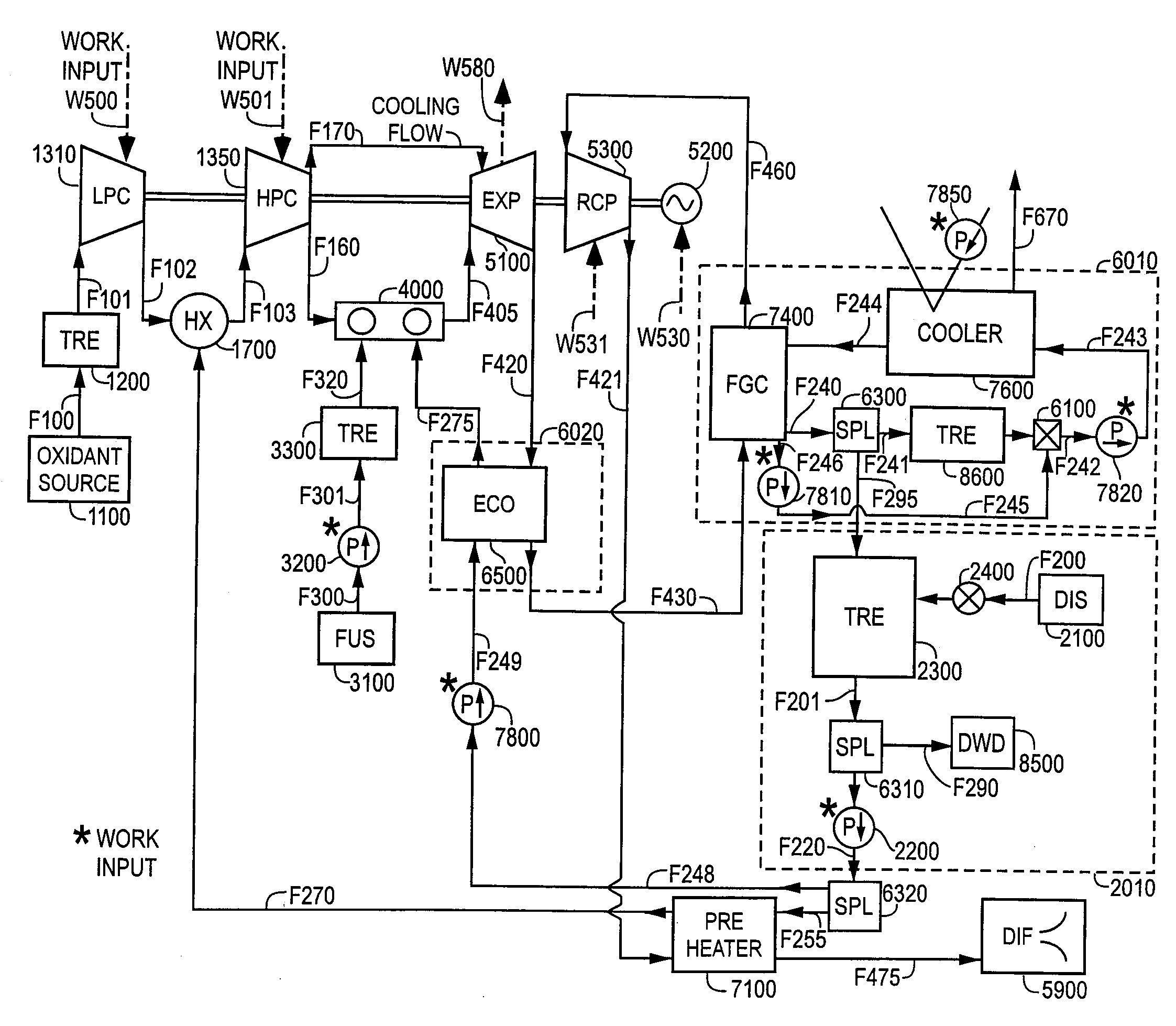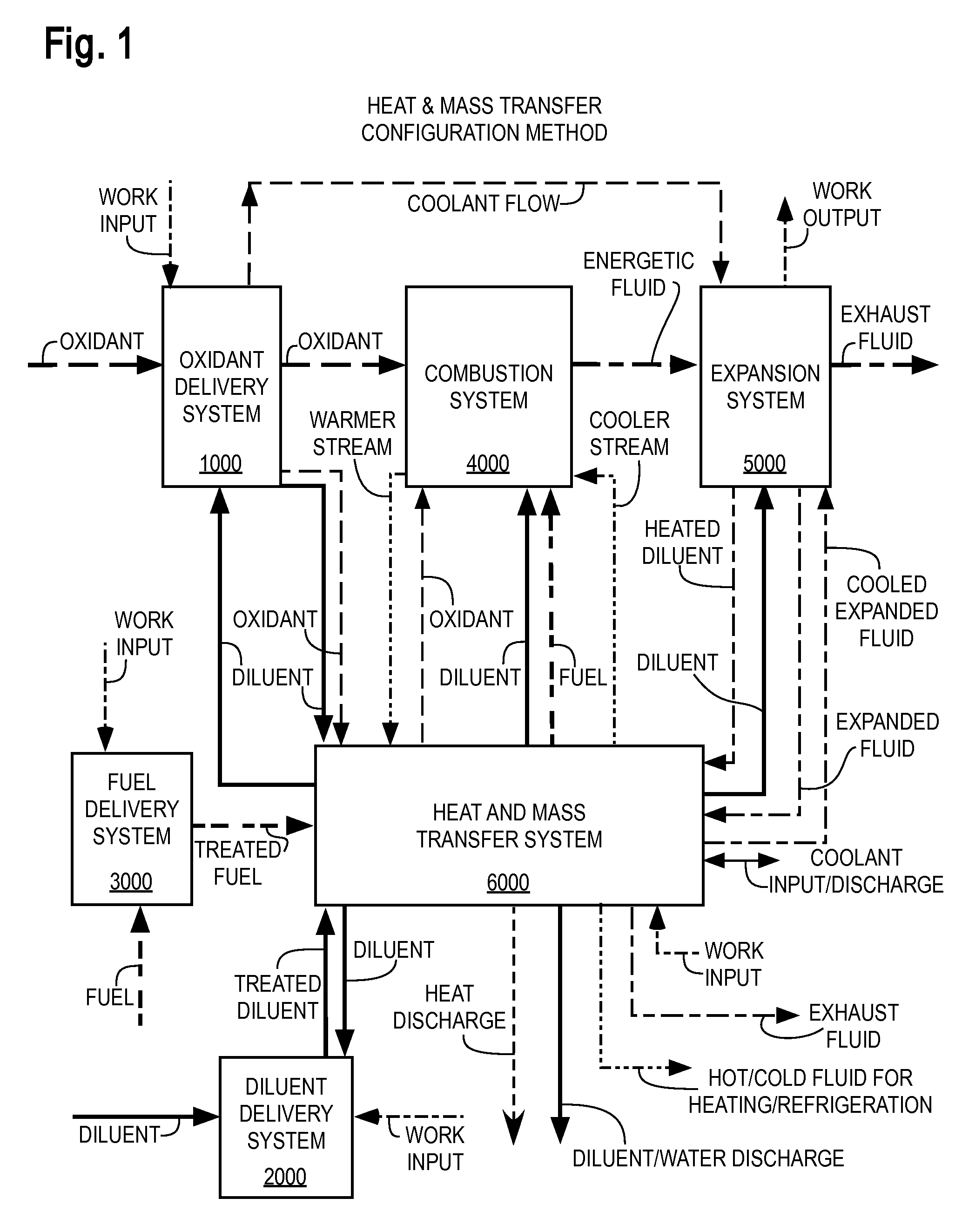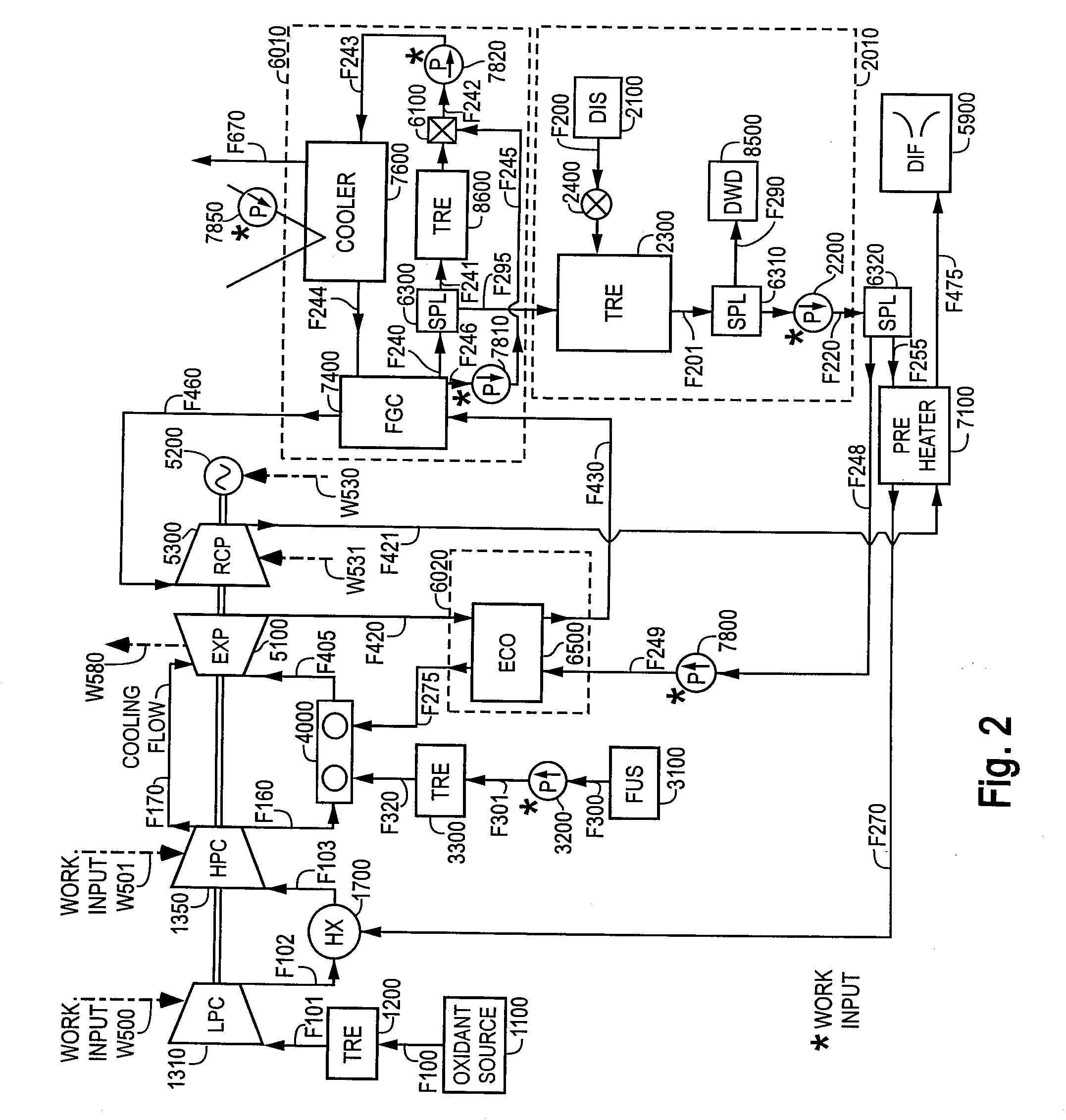Thermodynamic cycles using thermal diluent
a technology of thermal diluent and thermal dilution, which is applied in the direction of combined combustion mitigation, non-combustible gas/liquid supply, sulfur compounds, etc., can solve the problems of low net specific power, low efficiency, and relative poor control of peak temperature, so as to improve performance and reliability, reduce system life cycle costs and emissions, and improve thermodynamic efficiency
- Summary
- Abstract
- Description
- Claims
- Application Information
AI Technical Summary
Benefits of technology
Problems solved by technology
Method used
Image
Examples
Embodiment Construction
General
[0088]U.S. Pat. Nos. 3,651,641, 5,617,719, 5,743,080 and 6,289,666 to Ginter teach VAST thermodynamic power cycles that primarily pump liquid thermal diluent (such as water) into a thermodynamic cycle to cool the combustion, reducing the use of excess dilution air. This VAST (“Value Added Steam Technology”) cycle is a hybrid between the Brayton and Rankine cycles and preferably uses fluid water as diluent. It uses an energetic fluid formed in a VAST direct contact fluid combustor, containing both hot products of combustion and superheated steam. This hot energetic fluid is preferably expanded through an expander to generate shaft and / or electrical power. E.g., via a turbine or reciprocating engine. It may also provide Combined Heat and Power (CUP).
[0089]With reference to FIG. 1, the VAST thermodynamic cycles utilize a Combustion System 4000 to form and deliver an Energetic Fluid to an Expansion System 5000 forming an expanded fluid and delivering Work Output. E.g., expanding ...
PUM
 Login to View More
Login to View More Abstract
Description
Claims
Application Information
 Login to View More
Login to View More - R&D
- Intellectual Property
- Life Sciences
- Materials
- Tech Scout
- Unparalleled Data Quality
- Higher Quality Content
- 60% Fewer Hallucinations
Browse by: Latest US Patents, China's latest patents, Technical Efficacy Thesaurus, Application Domain, Technology Topic, Popular Technical Reports.
© 2025 PatSnap. All rights reserved.Legal|Privacy policy|Modern Slavery Act Transparency Statement|Sitemap|About US| Contact US: help@patsnap.com



